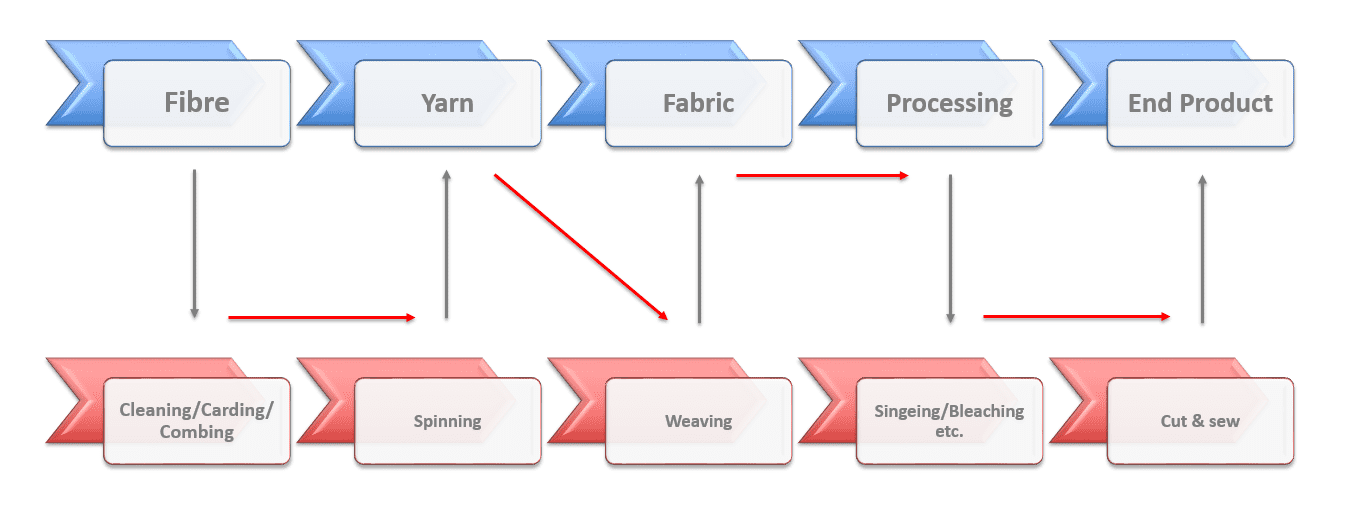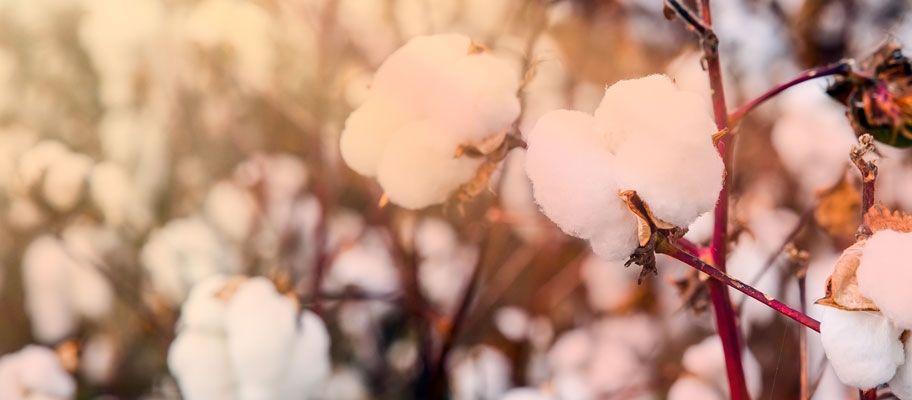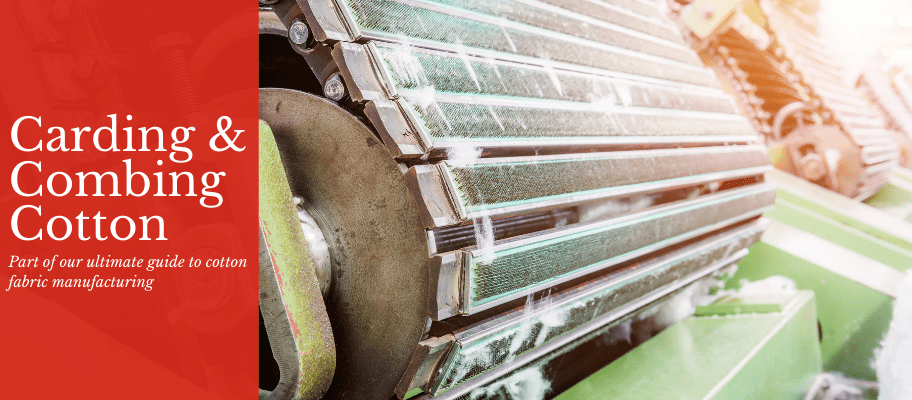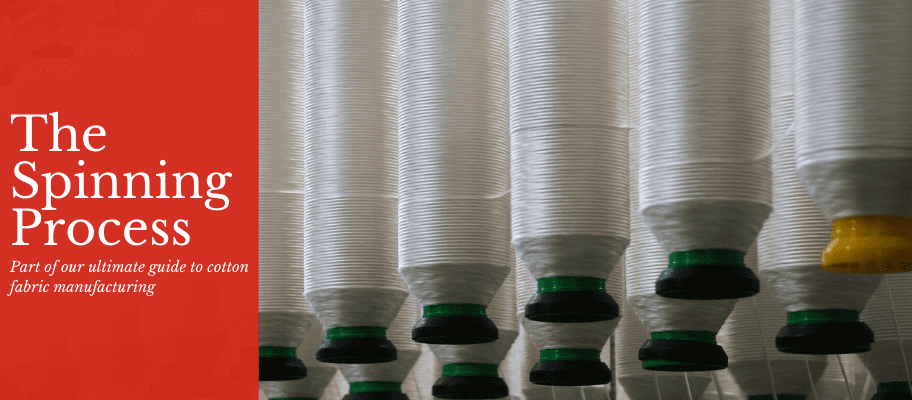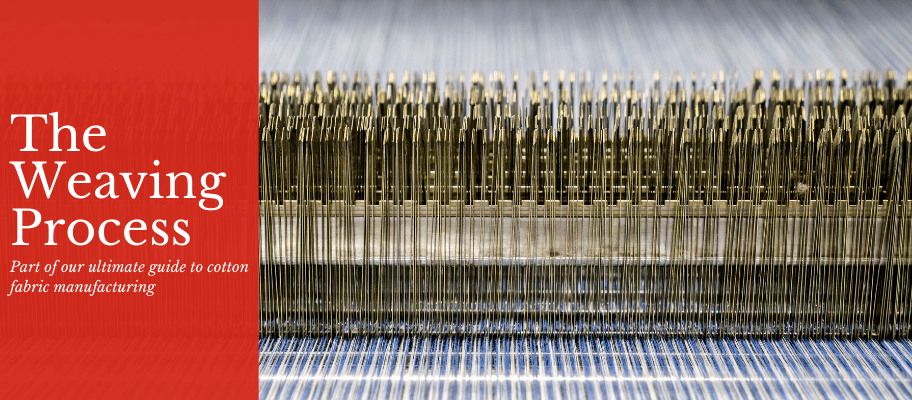We use cookies to give you the best possible experience. To accept cookies continue browsing, or view our Cookies Policy to find out more.
The Ultimate Guide To Cotton Fabric Manufacturing: Part 1 - The Harvesting & Cleaning Process
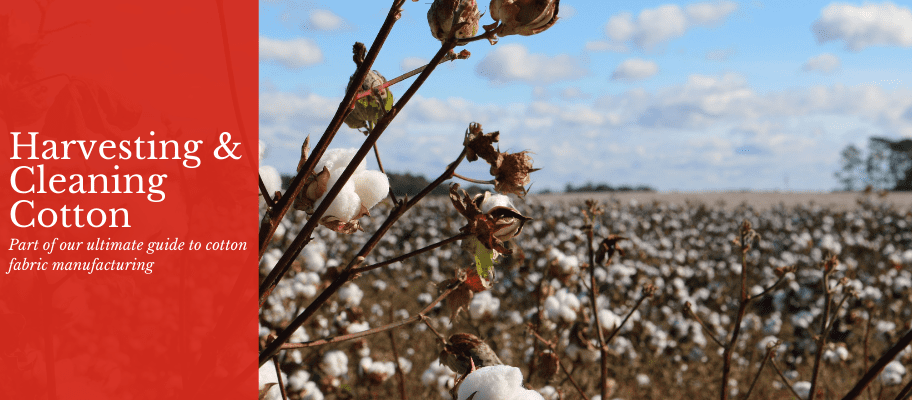
Welcome to our series on the textile manufacturing process. In a series of posts we'll go through all the entire process that our textiles go through, from the cotton in the field to the final product that you can buy at Vision Linens. Let's get started!
A Brief Overview of the Cotton Textile Manufacturing Process
Firstly, let’s give you a quick overview of the manufacturing process. After this brief overview, we’ll go into more detail.
After picking the cotton, the raw fibre from the cotton plant goes through a cleaning and carding - and sometimes a combing - process to natural build-up like leaves and twigs that gets caught up during the picking process. This process also brushes out and aligns the fibres.
Following this, the cotton fibres are then spun into a yarn. Yarn can be spun in different ways, which we’ll run through later. The yarn is then woven on a loom to give make the fabric. This is either a dobby loom for plain fabric or fabrics with a basic design such as a stripe, or a jacquard loom for more complicated patterns such as logos or floral designs for example.
The fabric then goes through a series of processing stages such as desizing, singeing, mercerising and bleaching etc. to give a soft, absorbent clean white fabric which is ready for use.
Finally, the fabric is then cut and sewn into the final product.
Each stage of the manufacturing process will influence the overall quality of the end product
- The quality of the fibre and how that is processed will affect the quality of the yarn.
- The fabric quality will depend on the yarn quality and how the yarn has been spun.
- Fabric colour, finish, hand feel, and shrinkage can depend on the different stages of processing.
- And the cut and sew quality can also affect the performance of the end product.
Now that we’ve had an overview of the entire process, let’s go into detail on each section. In this article we’ll tackle the picking of the raw cotton fibre and the opening and cleaning process that makes it ready to be turned into yarn.
Picking the Raw Cotton Fibre
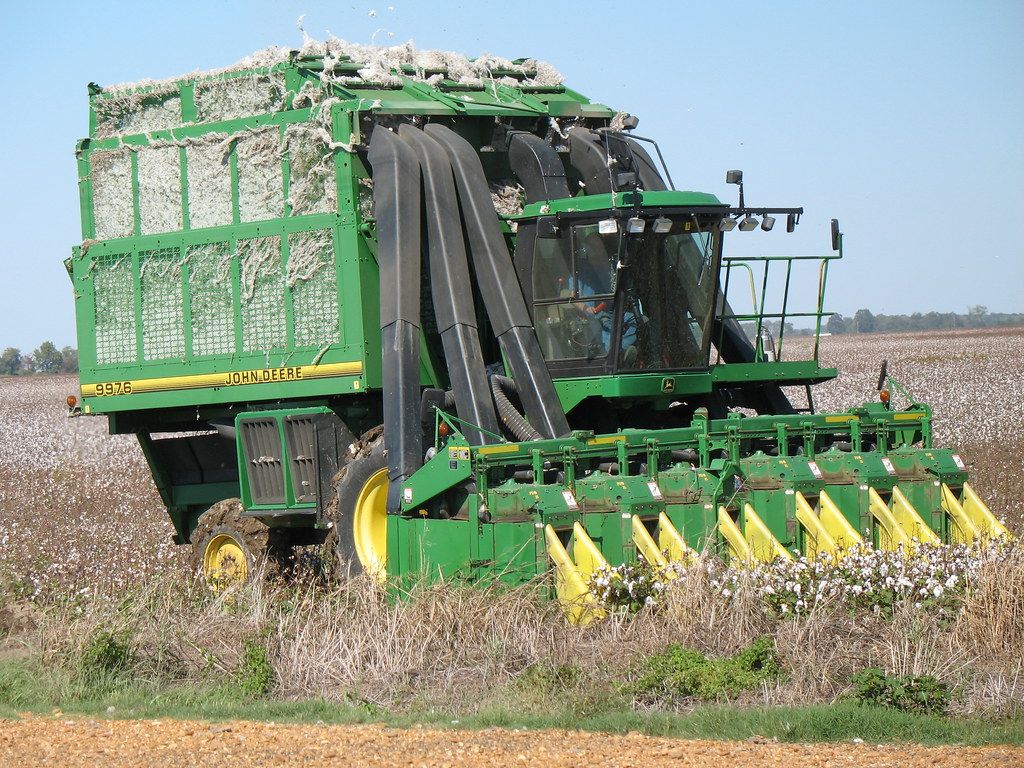
"Cotton Picking" by NatalieMaynor is licensed under CC BY 2.0
After cotton is planted, it takes around two months until flower buds known as ‘squares’ appear on each cotton plant. After around three weeks, the blossoms open and the petals go through a series of colour changes. They begin as a creamy white before slowly turning into yellow followed by pink and the final stage of dark red. After around three days these petals wither and fall off, leaving behind green pods that are known as ‘bolls.
Cotton fibre grows within these bolls, pushing out from newly formed seeds and turning the boll brown as it ripens. As the fibres continue to expand, they eventually split the boll apart and cloud-like fluffy cotton will be left.
These small balls of cotton are then picked either by hand (which is still common in countries such as India or China) or by machines to separate them from the plant (the method used in the US). Machines, known as stripper harvesters and spindle pickers, use spindles to pick the cotton from the burrs attached to the plant’s stems. Picker machines may pull in parts of the plant, but for the most part they tend to leave most of the plant in the ground. Cotton strippers, on the other hand, tend to pull in most of the leaves and branches, requiring a more intensive cleaning process for the cotton.
In any case, cotton fibre must be separated from the plant and cleaned up before moving onto the next stage. The cotton also needs to be graded into different qualities as the quality will depend on the growing conditions.
Preparing the Cotton Fibre
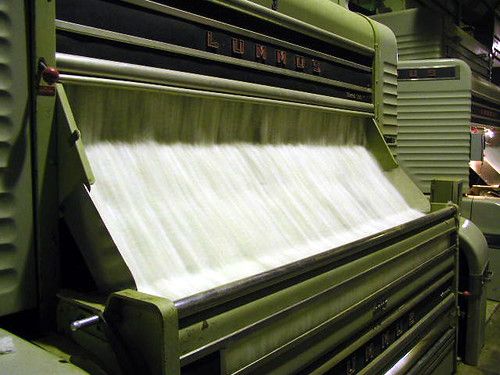
"Cotton Gin" by billums is licensed under CC BY 2.0
The first stage after harvest is known as the ginning process, where the collected raw cotton fibre goes into a cotton gin. This is a mechanical cleaning process where a machine separates the leaves and twigs (the ‘trash’) from the raw cotton fibre itself. It is then dried and compressed into bales known as lint.
There are couple of variations of the cotton gin. The first, a saw gin, carries about both the cleaning and ginning process. A saw gin consists of a series of saws, where the teeth grab the cotton fibre and pull it away. A narrow grill of bars or ribs prevents the seed from being pulled through too, while the cotton fibre is dumped into a rounded box or hopper where it stays as a roll. Meanwhile, the seed falls into a collecting box and the lint is blown off the teeth of the saws by brushes or a blast of air.
A roller gin tends to be used with longer staple cotton. This uses a leather roller to capture the cotton fibre, while a rapidly moving knife blade is used to separate the fibres and seeds. Revolving brushes then clean the seed away. The process is continued until all the fibre is separated.
In either case, only around 33% of the harvested crop ends up being usable lint. The rest of the cotton plant isn’t wasted. The seed is pressed into cooking oil, while husks and meal can be made into animal feed. Finally, the stems can be turned into paper.
If you'd like to learn more about the history of the cotton gin, see this article.
After the ‘trash’ is removed, samples are then taken from the bales of lint and the fibres are graded by experts. The bale samples are graded against the following set standards:
- Length
- Strength
- Fineness
- Uniformity
- Colour
All these things depend on the growing conditions, as good conditions will give a better quality of cotton. The quality of the cotton affects the price as the fibre quality determines the yarn and the final fabric quality. Higher grade cotton will be sold at a high price.
The Opening and Cleaning Process
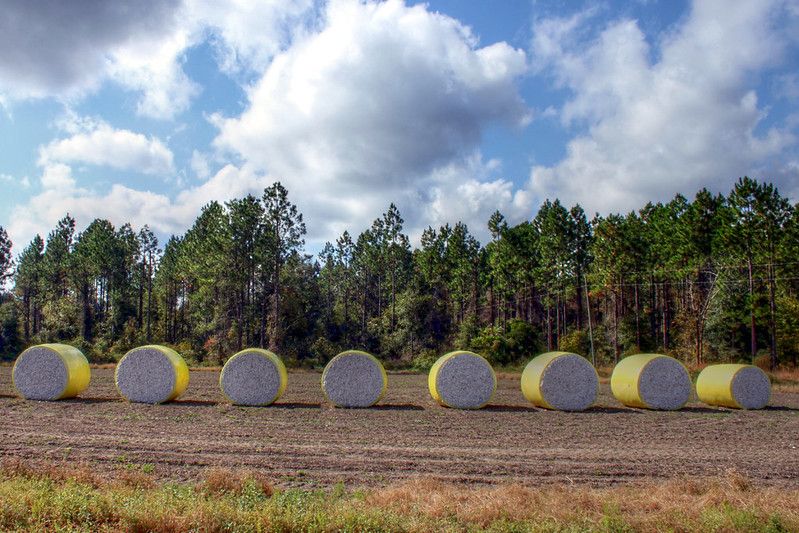
"Cotton bales in a row" by muffinn is licensed under CC BY 2.0
When the cotton bales arrive at a cotton mill, they still hold vegetable matter. The next step in the process is to get rid of this vegetable matter and this is done through another mechanical process. A machine with large spikes called an ‘opener’ is used to break the bales up.
Once the bales are opened, a machine called a ‘picker’ is used to separate the vegetable matter from the cotton and fluffs the cotton up. A beater bar beats the cotton to loosen it up and, finally, it’s fed through a series of rollers in order to remove the vegetable matter.
Fans then blast the cotton against a screen, where is then fed through yet more rollers before finally emerging as a continuous blanket of fleecy cotton fibres that is called a ‘lap’.
Different grades of cotton are often mixed in at this point to balance out the quality and the price to give a commercially relevant product for the end use.
All this preparation gives us a clean and prepared blanket of fibres that are in a fit state to be turned into a yarn.
The next stage is the carding and combing process, which you can read about by clicking on the link below:
Part Two - Carding & Combing the cotton.
The full guide:
Read Part One - The Harvesting and Cleaning Process
Read Part Two - The Carding and Combing Process
Read Part Three - The Spinning Process
Read Part Four - The Weaving Process
Read Part Five - The Finishing Process
Read Part Six - The Product Makeup Process For Bedding & Towels


